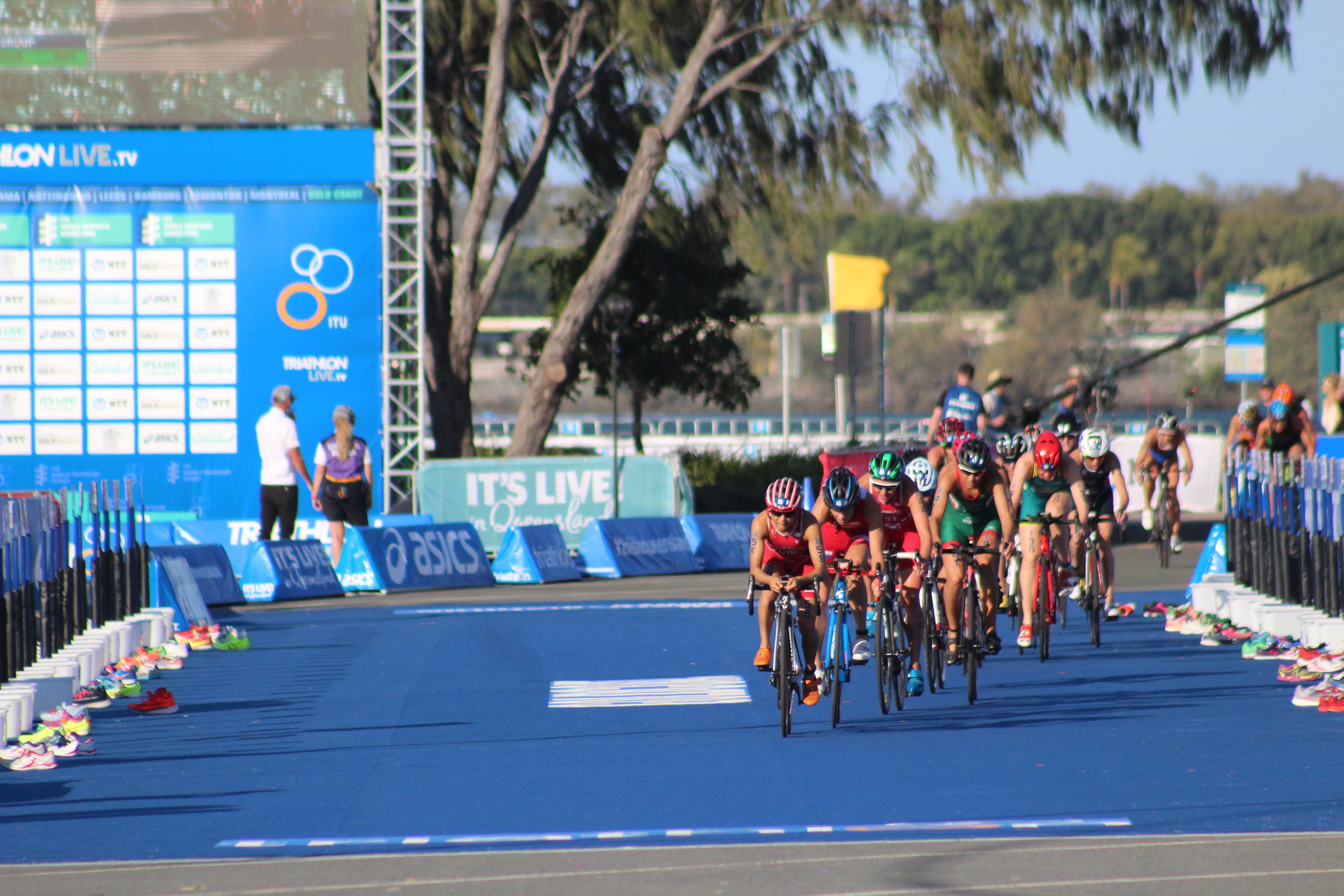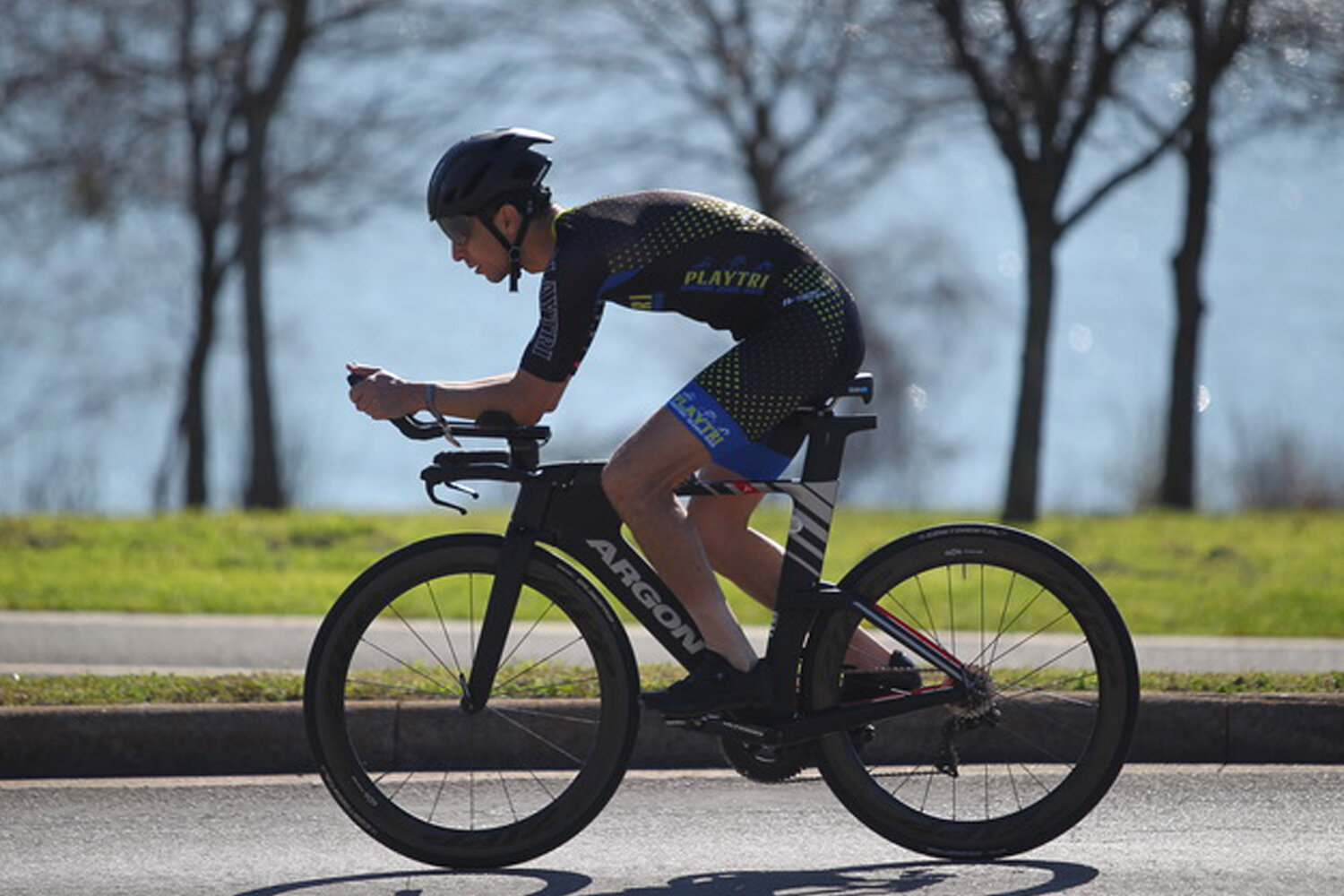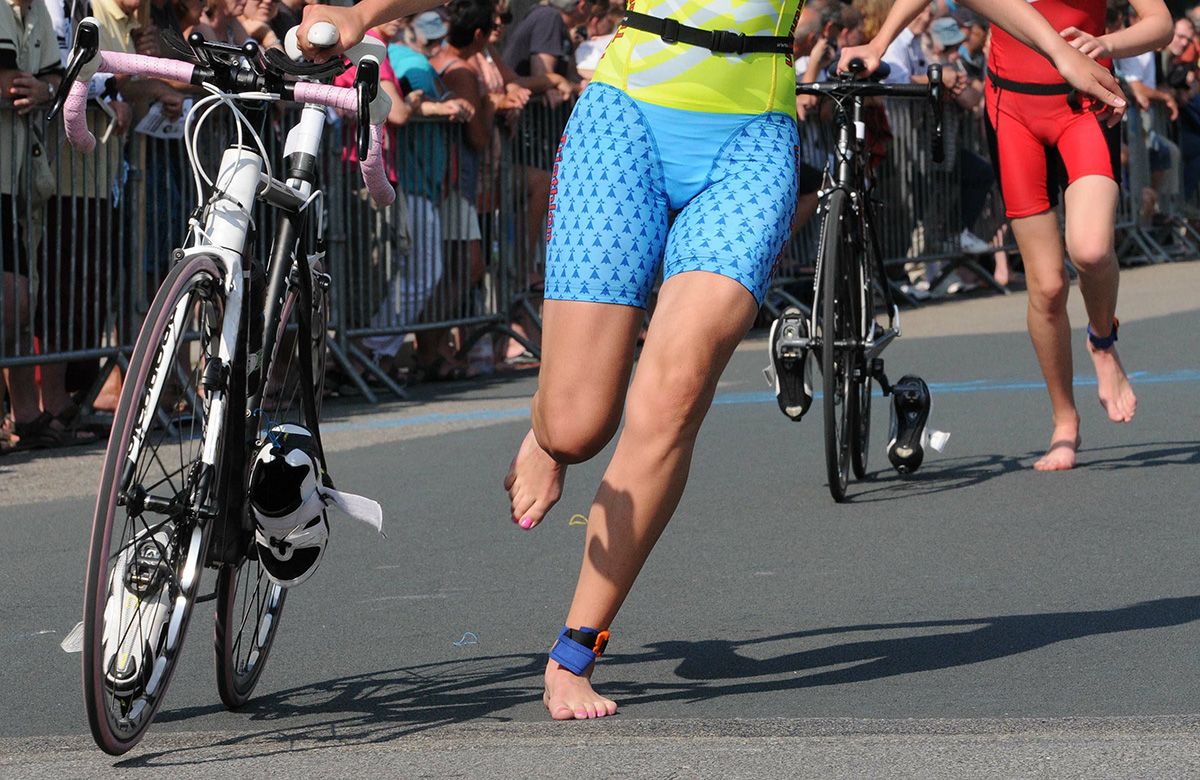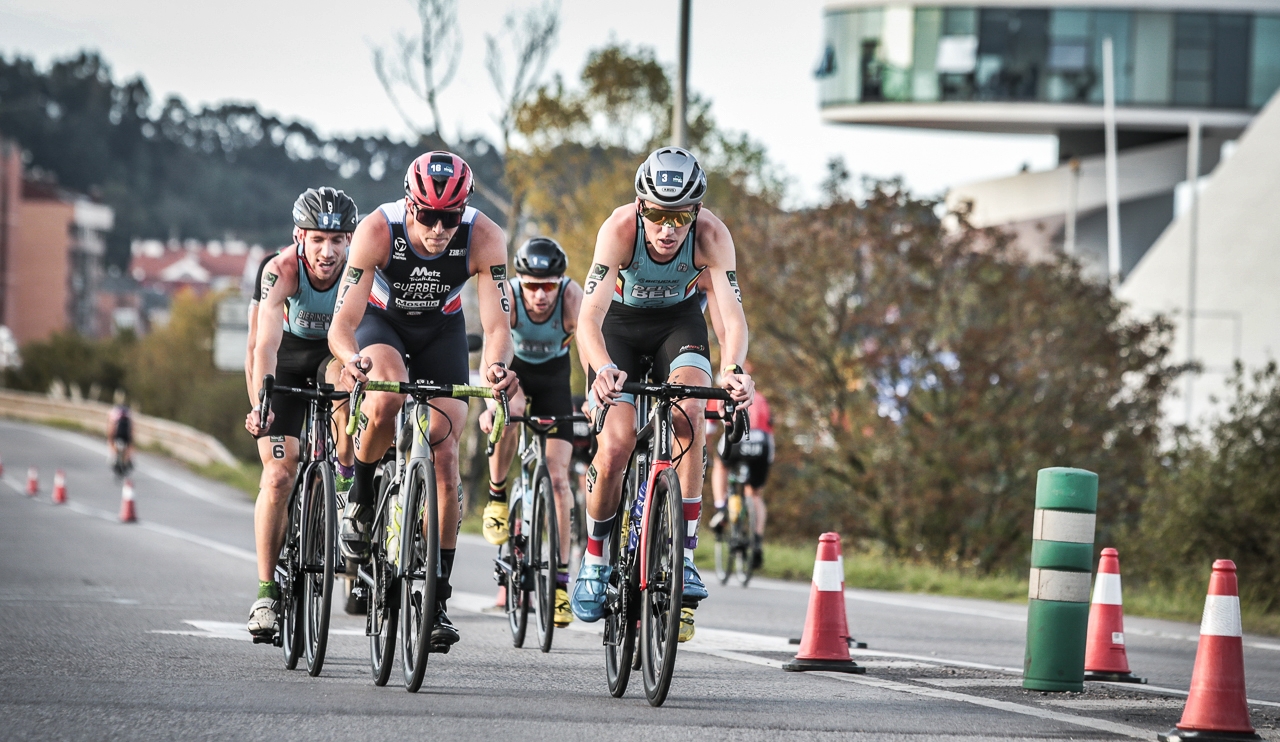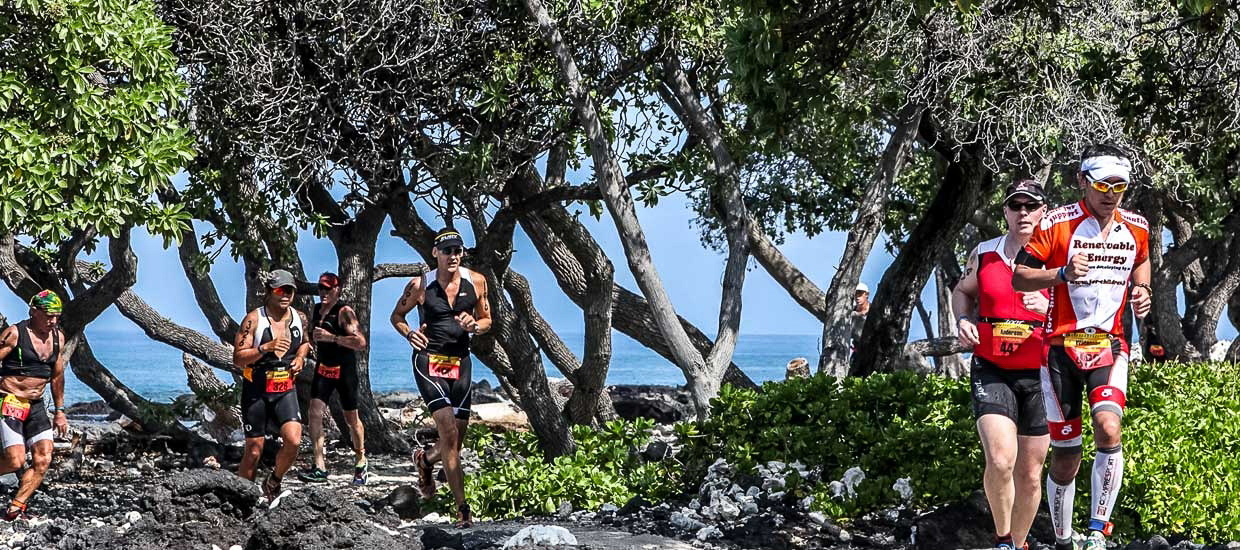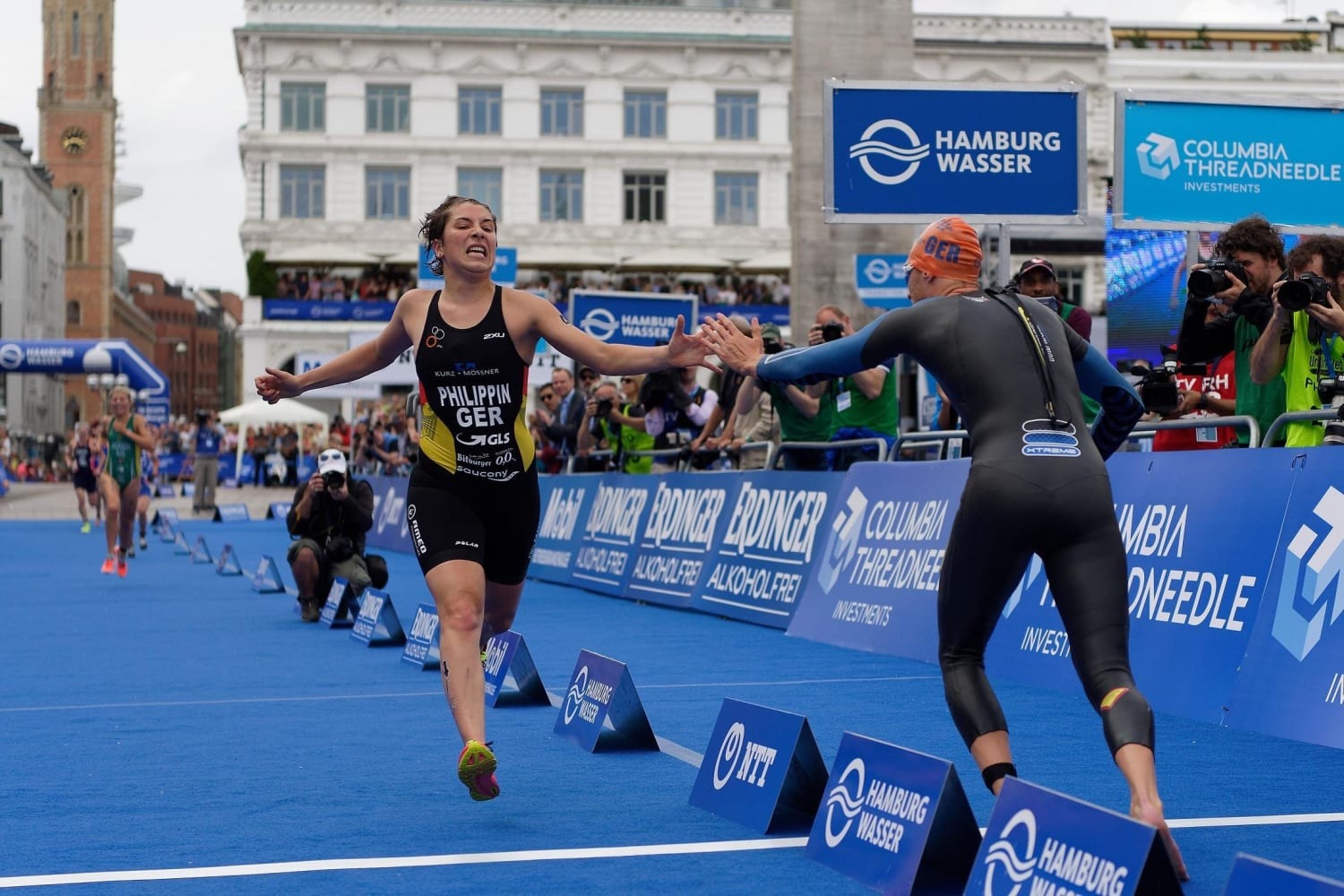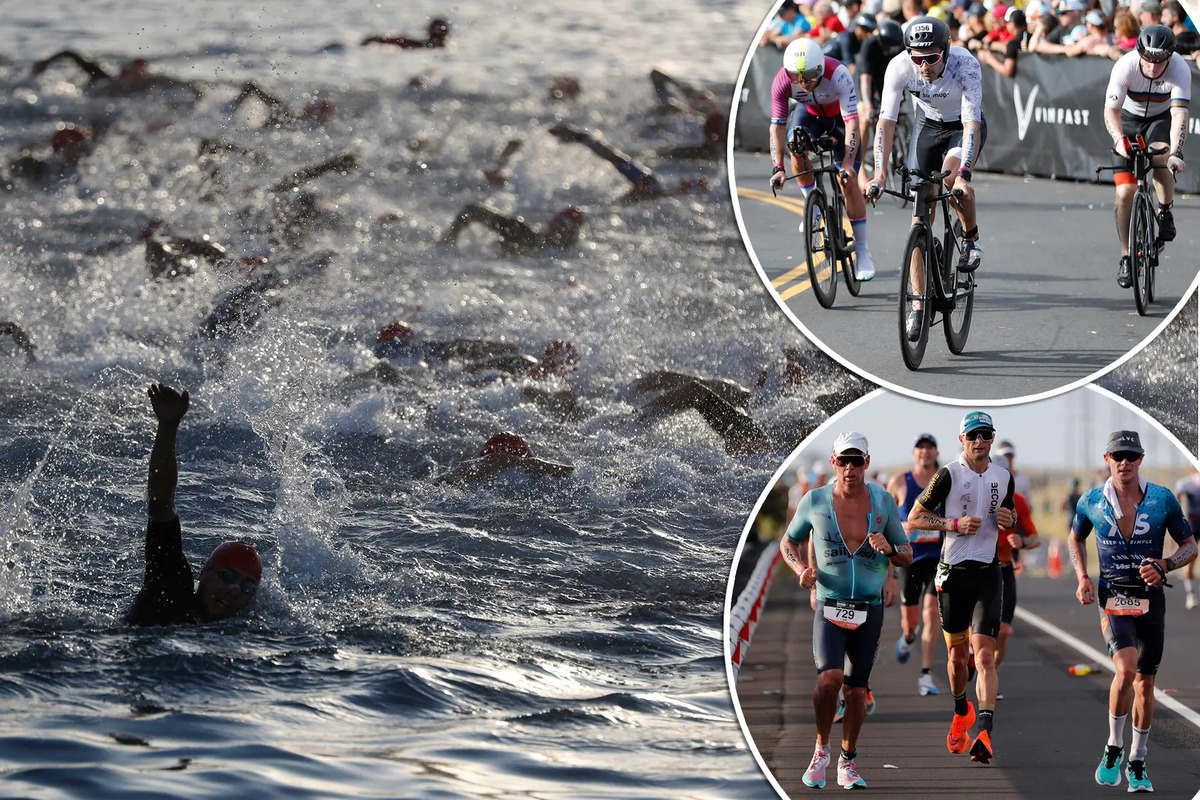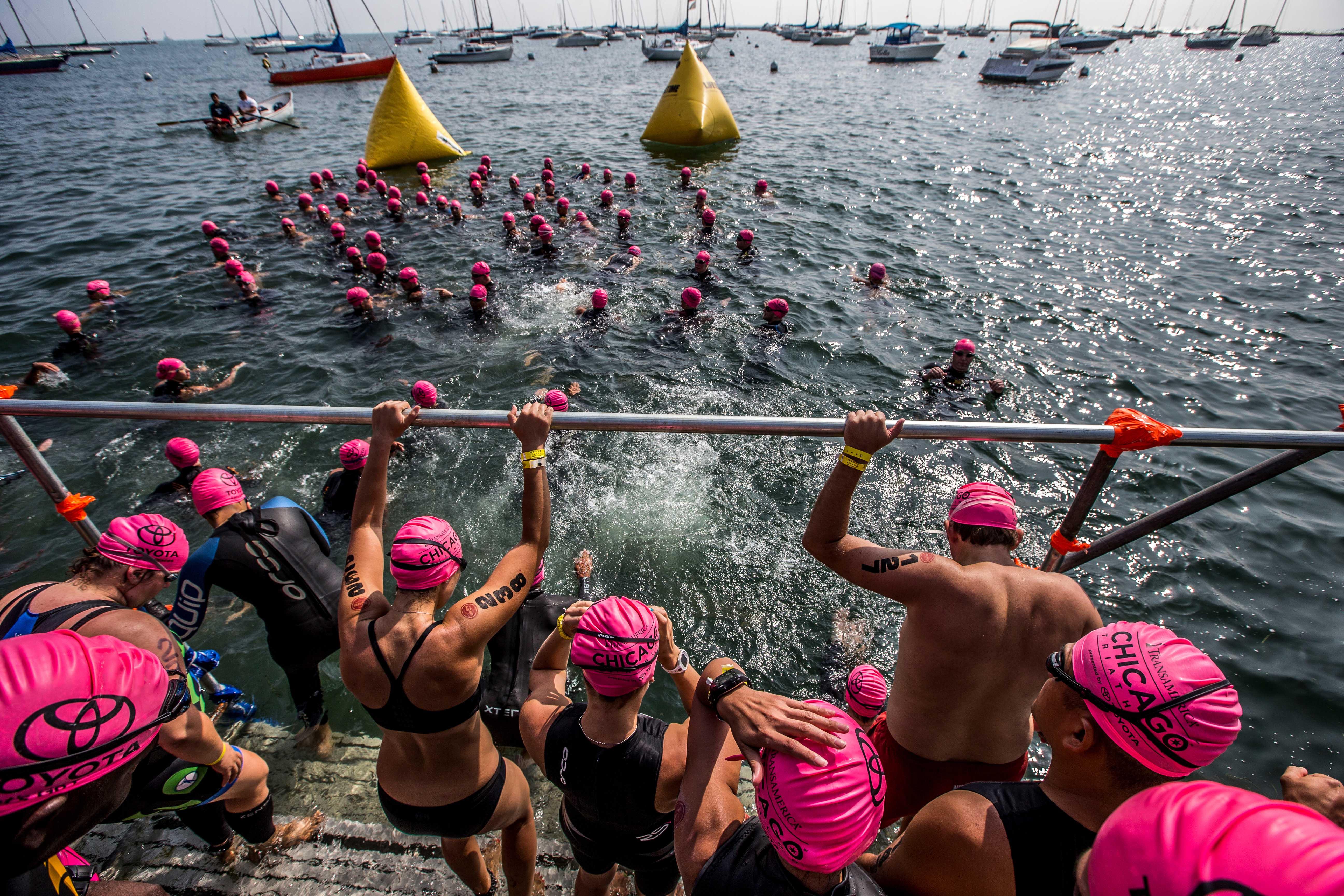

Featured
How To Train For A Triathlon At Home
Modified: January 2, 2024
Train for a featured triathlon at home with our comprehensive guide. Achieve your fitness goals and prepare for the ultimate challenge in just a few simple steps.
Introduction
Welcome to the world of triathlon! Whether you are a seasoned athlete looking for a new challenge or a beginner eager to push your limits, training for a triathlon can be an exhilarating and rewarding experience. Triathlons combine three demanding disciplines – swimming, cycling, and running – making it a true test of physical and mental endurance.
In the past, training for a triathlon usually meant joining a gym, a pool, or hitting the open road. However, with the current state of the world, many of us find ourselves needing to adapt and train from the comfort of our own homes. Despite the challenges, it is entirely possible to prepare for a triathlon from home and still achieve your fitness goals.
In this article, we will guide you through the process of training for a triathlon at home. We will provide you with practical tips, training strategies, and nutritional guidance to help you develop the strength, stamina, and mental fortitude required to conquer the triathlon.
Before diving into your training plan, it’s important to understand that training for a triathlon requires dedication, commitment, and consistency. It’s not just about completing the distances; it’s about improving your performance, increasing your endurance, and surpassing your own limits. So, get ready to push yourself, stay motivated, and remember why you embarked on this journey in the first place.
Now, let’s take a look at how you can find the right space in your home and get started with your triathlon training.
Finding the Right Space
When training for a triathlon at home, it’s essential to create a dedicated space that allows you to perform your workouts effectively. Here are some tips to help you find the right space:
- Designate a specific area: Allocate a dedicated area in your home where you can perform your workouts. It could be a spare room, a corner of your living room, or even your backyard. Having a designated space will help you stay focused and motivated.
- Clear the space: Make sure your training area is clutter-free and free from any potential hazards. Remove any furniture or objects that may hinder your movements, ensuring you have ample space to perform your exercises safely.
- Consider equipment needs: Evaluate the equipment you’ll need for your triathlon training and ensure you have enough space to accommodate them. If you plan to have a stationary bike or treadmill, make sure there’s enough room for them to be set up.
- Ensure proper ventilation and lighting: Good airflow and proper lighting are crucial for a comfortable and safe training environment. Choose a space with adequate ventilation and consider adding additional lighting if needed.
- Minimize distractions: Try to choose a space that is free from distractions. If possible, inform your family members or roommates about your training schedule to minimize interruptions during your workouts.
- Use technology to your advantage: If you have limited space, consider utilizing technology to enhance your training experience. There are various apps, virtual training programs, and online platforms that can provide guided workouts and assistance, even in small areas.
Remember, the key is to make the most of the space you have available. Adaptability and creativity will be your allies throughout your training journey. With the right mindset and a dedicated training space, you’ll be ready to take on the challenges that lie ahead in your triathlon training.
Setting Goals and Creating a Training Plan
Before diving into your triathlon training, it’s important to set clear goals and create a well-structured training plan. This will not only keep you motivated but also ensure that you progress steadily towards your desired outcomes. Here’s how you can establish goals and develop a training plan:
- Identify your objectives: Start by identifying what you want to achieve from your triathlon training. Is your goal to complete your first triathlon, improve your performance in specific disciplines, or achieve a personal best time? Clearly defining your goals will give your training purpose and direction.
- Assess your current fitness level: Evaluate your current fitness level in swimming, cycling, and running. This will help you understand your strengths and weaknesses and guide your training focus accordingly. Consider doing fitness tests, such as timed swims, bike rides, and runs, to establish a baseline.
- Set SMART goals: SMART stands for Specific, Measurable, Achievable, Relevant, and Time-bound. Ensure that your goals meet these criteria. For example, instead of saying, “I want to improve my cycling,” set a SMART goal like, “I aim to reduce my cycling time by 10% within the next three months.”
- Break it down: Divide your training into phases or cycles. Start with a base phase to build your overall endurance, then progress to specific training phases that focus on each discipline. Allow for recovery weeks in between to prevent overtraining and reduce the risk of injury.
- Create a training schedule: Determine the number of training sessions you can realistically commit to each week and allocate specific days for each discipline. Incorporate cross-training and strength training sessions to improve overall fitness and prevent imbalances.
- Gradually increase intensity and volume: Gradually increase the intensity and duration of your workouts over time. Avoid sudden spikes in training load, as this can lead to overuse injuries. Monitor how your body responds and listen to any signs of fatigue or injury.
- Track your progress: Keep a training log to monitor your workouts, track improvements, and make adjustments as needed. This will help you stay accountable and motivated throughout your training journey.
Remember, a well-rounded training plan includes not only the physical aspects but also nutrition, rest, and recovery strategies. Be flexible and adjust your plan as needed to accommodate any changes or unforeseen circumstances. With a clear set of goals and a structured training plan, you’ll be well on your way to achieving success in your triathlon endeavors.
Swimming Exercises
Swimming is often regarded as the most challenging discipline in a triathlon, especially for those who are new to the sport. However, with regular practice and the right exercises, you can improve your technique and endurance in the water. Here are some swimming exercises to incorporate into your training:
- Drills for technique: Focus on drills that help improve your swimming technique. These include kickboard drills, where you hold onto a kickboard and focus on your leg movements, and fingertip drag drills, where you drag your fingertips along the water’s surface to promote proper arm extension.
- Endurance workouts: To build your swimming endurance, incorporate longer distance swims into your training. Start with shorter distances and gradually increase the distance as you progress. Aim to swim at a steady pace, focusing on maintaining good form throughout.
- Interval training: Interval training involves alternating between periods of high-intensity swimming and rest or active recovery. For example, you can swim sprints for a set distance or time, followed by a slower-paced recovery swim. This helps improve your speed and anaerobic fitness.
- Open water simulations: If your triathlon will take place in open water, try to simulate those conditions in your training. Find a local lake or beach where you can practice swimming in open water. This will help familiarize you with the challenges of swimming in natural environments.
- Strength and conditioning exercises: Incorporate strength and conditioning exercises specific to swimming to improve your overall performance. These may include pull-ups, push-ups, and core exercises like planks and Russian twists.
- Work on bilateral breathing: Bilateral breathing, where you alternate breathing on both sides, is crucial for better balance and coordination in the water. Practice breathing on your non-dominant side during your swim sessions to improve bilateral breathing.
- Join a swim squad or get coaching: Consider joining a local swim squad or hiring a coach who can provide guidance and help correct your technique. They can also offer tailored workouts based on your skill level and goals.
Remember to start gradually and progress at your own pace. It’s important to focus on technique before speed, as proper form and efficiency will ultimately lead to better performance in the water. With consistent practice and a variety of swimming exercises, you will become a stronger and more confident swimmer in your triathlon races.
Cycling Workouts
Cycling is a crucial discipline in triathlon, as it not only requires physical stamina but also demands strategic pacing. Incorporating a variety of cycling workouts into your training plan will help you improve your endurance, strength, and speed on the bike. Here are some cycling workouts to consider:
- Long endurance rides: These rides are aimed at building your aerobic base and improving your overall endurance. Start with a comfortable pace and gradually increase the distance over time. Focus on maintaining a steady effort throughout the ride.
- Hill repeats: Find a hilly route or a specific hill where you can challenge yourself with hill repeats. Ride at a high intensity up the hill, then recover on the way down. Repeat this several times to build both strength and mental resilience.
- Interval training: Interval training on the bike involves alternating between periods of high intensity and recovery. For example, you can do a set of 3-minute intervals at a high intensity, followed by a 2-minute recovery at an easier effort level. This helps improve your speed, power, and lactate threshold.
- Tempo rides: Tempo rides are sustained efforts at a challenging pace, just below your lactate threshold. This helps train your body to tolerate higher levels of lactate buildup and improve your ability to maintain a steady pace during longer rides or races.
- Spin-ups: Spin-ups involve increasing your cadence (pedaling speed) gradually until you reach a fast cadence. This exercise helps develop leg speed and efficiency on the bike. Start with short spin-ups and gradually increase the duration.
- Brick workouts: A brick workout involves combining two disciplines back-to-back, such as cycling followed immediately by a run. These workouts help you adapt to the feeling of transitioning from one discipline to another, which is essential in a triathlon.
- Indoor cycling: If outdoor cycling is not feasible, indoor cycling on a stationary bike or indoor trainer is a great alternative. Many online platforms offer virtual cycling classes, allowing you to simulate real-world rides and even compete with others.
- Long distance rides: As your race approaches, incorporate longer rides that closely mimic the distance of your triathlon. This will help you build confidence, test your nutrition and hydration strategies, and develop your mental endurance.
Remember to adjust the intensity and duration of your cycling workouts based on your fitness level and training goals. Gradually increase the difficulty as you progress to continually challenge yourself. Don’t forget to prioritize safety by wearing proper cycling gear, including a helmet, and adhering to traffic rules and regulations if you’re cycling outdoors.
By incorporating a combination of these cycling workouts into your training plan, you’ll be well-prepared to tackle the cycling leg of your triathlon with confidence and strength.
Running Training
The running portion of a triathlon is often the final leg, where mental and physical fatigue can challenge your performance. Incorporating specific running workouts into your training plan will help you build endurance, improve speed, and develop mental resilience. Here are some running training suggestions for your triathlon preparation:
- Base runs: Start with base runs to build your aerobic endurance. These are longer, steady-paced runs that help strengthen your cardiovascular system and develop your ability to run longer distances comfortably.
- Interval training: Interval training involves alternating between high-intensity running and recovery periods. For example, you can do a set of 400-meter sprints followed by a 200-meter jog or walk for recovery. This helps improve speed, anaerobic fitness, and running economy.
- Tempo runs: Tempo runs are sustained efforts at a challenging pace, slightly faster than your comfortable pace. They are designed to improve your lactate threshold, enabling you to maintain a faster pace for a longer duration.
- Hill sprints: Find a hill or incline where you can do hill sprints. Running uphill challenges your leg strength and cardiovascular system, improving your overall running power and form. Sprint up the hill at maximum effort and recover by walking or jogging down.
- Long runs: Long runs are essential for building endurance and mental toughness. Gradually increase the distance of your long runs, simulating the distance you’ll cover in your triathlon race. These runs also allow you to practice your hydration and fueling strategies.
- Brick workouts: Include brick workouts in your training routine, where you transition from a bike ride to a run immediately. This helps your body adapt to the sensation of running after cycling and simulates the conditions of a triathlon race.
- Fartlek runs: Fartlek, which means “speed play” in Swedish, involves alternating between periods of fast and slower-paced running. This type of training is versatile and can be done on any terrain, allowing you to vary your pace and improve both your speed and endurance.
- Recovery runs: Don’t underestimate the importance of recovery runs. These shorter, easy-paced runs help flush out lactic acid, promote recovery, and improve your overall running economy.
Remember to warm up properly before each run and cool down afterward to minimize the risk of injuries. Listening to your body and allowing enough time for rest and recovery is equally important in order to avoid overtraining and optimize performance.
Incorporating a mix of these running workouts into your training plan will prepare you physically and mentally for the running portion of your triathlon, ensuring that you’re ready to give it your best on race day.
Strength and Conditioning
Strength and conditioning training plays a vital role in enhancing your overall performance and reducing the risk of injuries in triathlon. By incorporating specific exercises into your training routine, you can improve muscular strength, power, and stability. Here are some key elements to focus on:
- Full-body strength training: Include exercises that target all major muscle groups, including your legs, core, upper body, and back. Squats, lunges, deadlifts, push-ups, and pull-ups are great functional exercises to build overall strength.
- Core stability exercises: A strong core is essential for maintaining proper form and stability in all three disciplines of triathlon. Planks, Russian twists, bicycle crunches, and bird dogs are effective exercises to target your core muscles.
- Functional movements: Incorporate exercises that mimic the movements required in triathlon. This includes step-ups, box jumps, kettlebell swings, and medicine ball throws. These exercises not only build strength but also improve your agility and power.
- Balance and stability training: Improve your balance and stability, especially for the swim and run disciplines. Exercises such as single-leg squats, stability ball exercises, and yoga or Pilates can help enhance your body’s stability and proprioception.
- Flexibility and mobility: Don’t neglect flexibility and mobility work. Stretching, foam rolling, and yoga can help improve your range of motion, reduce muscle imbalances, and enhance recovery.
- Resistance training: Incorporate resistance bands or weights into your strength training routine. This added resistance can help build muscle strength and power, which is crucial for overcoming the demands of the triathlon.
- Injury prevention exercises: Include exercises that target specific areas prone to injury in triathlon, such as the knees, hips, and shoulders. These exercises can help strengthen the supporting muscles and prevent common overuse injuries.
- Periodization: Structure your strength and conditioning training in a periodized manner, with different phases focusing on different aspects of strength, power, and endurance. This will help ensure progressive overload and prevent plateauing.
Remember to focus on proper form and technique when performing strength exercises. If you are new to strength training, consider seeking guidance from a certified strength and conditioning coach or personal trainer to help you design an effective program tailored to your needs and abilities.
Integrating strength and conditioning training into your triathlon preparation will not only enhance your performance but also reduce the risk of injuries, enabling you to perform at your best on race day.
Incorporating Brick Workouts
Brick workouts, also known as brick training, are an essential component of triathlon preparation. These workouts involve combining two disciplines back-to-back, typically cycling and running. The purpose of brick workouts is to help your body adapt to the unique challenges of transitioning from one discipline to another. Here’s how you can incorporate brick workouts into your training plan:
- Start with shorter distances: Begin with shorter distances for your brick workouts, especially if you’re new to triathlon or transitioning from single-discipline training. For example, start with a 15-minute bike ride immediately followed by a 10-minute run.
- Focus on the transition: Pay attention to the transitions between disciplines during your brick workouts. Practice quickly and smoothly switching from cycling to running, ensuring you have a smooth transition mentally and physically.
- Gradually increase distance and intensity: As you become more comfortable with brick workouts, gradually increase the distance and intensity of each discipline. This will simulate the demands of triathlon races, where longer distances and higher intensities are required.
- Perform specific race-simulation workouts: Incorporate brick workouts that closely mimic the distance and order of your triathlon race. For example, if you’re training for a sprint triathlon, complete a bike ride followed immediately by a run at the same distances you’ll cover during the race.
- Practice pacing: Use brick workouts to practice pacing strategies for each discipline. Experiment with different intensities and effort levels to find the optimal balance that allows you to maintain a strong performance in both cycling and running.
- Remember nutrition and hydration: During brick workouts, pay attention to your nutrition and hydration needs. Practice fueling and hydrating as you would during an actual triathlon, ensuring you’re adequately nourished for both the bike and run portions.
- Recover and evaluate: After each brick workout, take time to recover and evaluate your performance. Assess how your body responds to the combined workload and identify areas for improvement in your transitions and overall performance.
- Vary your brick workouts: Mix up your brick workouts to include different combinations of disciplines. For example, you can do a swim followed by a bike ride or a bike ride followed by a swim. This will help you adapt to different sequences and improve your overall triathlon readiness.
Remember, brick workouts provide a unique training stimulus that prepares your body and mind to seamlessly transition from one discipline to another. Incorporating these workouts into your training plan will help you optimize your performance and build confidence in the multi-sport nature of triathlon.
Nutrition and Hydration
Nutrition and hydration are critical factors in triathlon performance and should be a focus throughout your training. Proper fueling and hydration strategies will help you maintain energy levels, optimize performance, and aid in recovery. Here are some tips to consider when it comes to nutrition and hydration for triathlon:
- Plan your meals: Create a meal plan that includes a balance of carbohydrates, proteins, and healthy fats. Aim to consume whole, nutrient-dense foods such as fruits, vegetables, lean meats, whole grains, and legumes. Avoid processed and high-sugar foods as much as possible.
- Prioritize carbohydrates: Carbohydrates are the primary fuel source for endurance exercise. Ensure that your diet includes complex carbohydrates such as whole grains, fruits, and vegetables to provide sustained energy for training and race day.
- Hydrate adequately: Proper hydration is crucial for performance and overall health. Drink water throughout the day and ensure you are well-hydrated before, during, and after each training session. Monitor your urine color as a general indicator of hydration status – pale yellow is ideal.
- During training: During longer workouts, consume both water and electrolyte-rich beverages to replace fluids lost through sweating. Experiment with different sports drinks or electrolyte supplements to find what works best for you.
- Practice race-day nutrition: Train your body to tolerate the nutrition and hydration strategies you plan to implement on race day. Practice consuming gels, energy bars, or other easily digestible fuel sources during your longer training sessions to ensure they work well for your stomach.
- Timing is key: Pay attention to the timing of your meals and snacks, especially before and after training sessions. Consume a balanced meal or snack containing carbohydrates and protein within 30 to 60 minutes after workouts to aid in muscle recovery.
- Dietary considerations: If you have dietary restrictions or follow a specific eating plan, such as vegetarian or vegan, ensure you are meeting your nutritional needs. Consider consulting a registered dietitian to help create a well-balanced and personalized nutrition plan.
- Listen to your body: Every individual is unique, so it’s essential to listen to your body and adjust your nutrition and hydration strategies accordingly. Pay attention to how different foods and fluids make you feel during training to determine what works best for your performance and digestive system.
Remember, nutrition and hydration are not one-size-fits-all approaches. It’s crucial to experiment during training to find what works best for your body. Developing a well-rounded nutrition and hydration plan will support your triathlon training, enhance your performance, and contribute to your overall well-being.
Rest and Recovery
Rest and recovery are often overlooked aspects of training, but they are essential for optimal performance and injury prevention in triathlon. Giving your body the time and resources it needs to repair and rebuild is key to improving fitness and avoiding overtraining. Here are some important considerations for rest and recovery:
- Include rest days: Schedule regular rest days into your training plan. These days allow your body to recover and reduce the risk of overuse injuries. Use this time to relax, engage in low-impact activities, or focus on mobility and flexibility exercises.
- Get enough sleep: Sleep is crucial for recovery and performance. Aim for 7-9 hours of quality sleep each night. Develop a consistent sleep routine, create a conducive sleep environment, and prioritize this aspect of recovery.
- Active recovery: Incorporate light exercise or active recovery sessions into your training plan. Low-intensity activities like gentle swimming, cycling, or yoga can help loosen muscles, enhance blood circulation, and promote recovery.
- Massage and self-care: Consider adding regular massages or self-care practices, such as foam rolling or using a massage ball, to your routine. These practices can help release muscle tension, improve flexibility, and aid in the recovery process.
- Hydration and nutrition: Proper hydration and nutrition are crucial for recovery. Replenish your body with a balanced meal or snack containing carbohydrates and protein after workouts to aid in muscle repair and glycogen replenishment.
- Manage stress: High levels of stress can negatively impact recovery and overall well-being. Incorporate stress management techniques such as meditation, deep breathing exercises, or engaging in activities that bring you joy and relaxation.
- Listen to your body: Pay attention to your body’s signals. If you’re feeling fatigued or experiencing signs of overtraining, adjust your training load or take an extra rest day. Ignoring these signals can lead to more severe exhaustion or injuries.
- Periodize your training: Structure your training plan in a way that includes progressive overload and periodic recovery weeks. This allows for adaptation and helps prevent burnout. Gradually increase training volume and intensity, and incorporate recovery weeks to allow your body to fully recover and rebuild before pushing harder.
- Keep a training journal: Maintain a training journal to track your workouts, sleep patterns, and feelings of fatigue. This can help you identify patterns and make adjustments to your training and recovery strategies.
Remember, rest and recovery are not signs of weakness but rather integral components of a successful training program. Embrace these practices to ensure that your body and mind are in the best possible condition for each training session and race day.
Mental Preparation
Triathlon is not just a physical test; it requires mental strength and resilience as well. Developing a strong mental game can help you overcome challenges, push through fatigue, and stay focused during training and on race day. Here are some strategies for effective mental preparation:
- Set clear goals: Clearly define your goals for the triathlon and specific training sessions. Having clear objectives will provide you with a sense of purpose and motivation, helping you stay focused and committed.
- Visualize success: Practice visualization techniques where you imagine yourself successfully completing the triathlon, tackling difficult sections, and executing each discipline with confidence. This mental rehearsal can boost self-belief and reduce anxiety.
- Positive self-talk: Replace negative self-talk with positive and encouraging affirmations. Remind yourself of your progress, strength, and ability to overcome challenges. Use phrases such as “I am strong,” “I can do this,” and “I am well-prepared.”
- Practice mindfulness: Incorporate mindfulness exercises into your daily routine. Activities such as meditation, deep breathing, and body scans can help you stay present, manage stress, and improve mental clarity.
- Develop coping strategies: Identify effective coping strategies for dealing with race-day nerves, setbacks, or pain during the race. This could include deep breathing, counting, or focusing on a mantra or visualization that helps you stay calm and focused.
- Break down the race: Rather than overwhelming yourself with the entire triathlon, break it down into smaller and manageable sections. Focus on one discipline or one segment at a time, knowing that each part brings you closer to the finish line.
- Embrace discomfort: In training, deliberately push yourself outside of your comfort zone to build mental resilience. Get comfortable being uncomfortable, as this will prepare you to handle the challenges that arise during the race.
- Practice adaptability: Things don’t always go as planned during a triathlon. Flexibility and adaptability are key mental skills. Embrace unexpected situations, adjust your strategies if needed, and maintain a positive mindset as you navigate any obstacles.
- Celebrate progress: Recognize and celebrate the small victories and progress you make during your training. Acknowledge your hard work, perseverance, and improvements, no matter how small they may seem. This positive reinforcement boosts confidence and motivation.
- Surround yourself with support: Seek out a supportive community of fellow triathletes, friends, or family members who understand and can provide encouragement during your training journey. Their support can be invaluable in keeping you motivated and uplifted.
Remember, your mindset can greatly influence your triathlon experience. By investing in your mental preparation, you’ll be equipped to approach challenges with confidence, maintain focus, and persevere through any obstacles that come your way.
Conclusion
Congratulations on embarking on your journey to train for a triathlon from the comfort of your home! It’s an admirable endeavor that requires dedication, commitment, and a well-rounded approach. By following the tips and strategies outlined in this article, you can ensure that your training is effective, enjoyable, and prepares you for success on race day.
We’ve explored how to find the right space in your home for training, set goals, create a training plan, and incorporate specific exercises for swimming, cycling, and running. We’ve also emphasized the importance of strength and conditioning, brick workouts, nutrition and hydration, rest and recovery, and mental preparation. Each of these elements plays a vital role in your overall triathlon preparation and performance.
Remember to listen to your body, adapt as needed, and seek professional guidance if necessary. Triathlon training is a challenging endeavor, but with consistent effort, patience, and a positive mindset, you can surpass your own expectations and achieve your triathlon goals.
Have faith in your abilities, celebrate your progress, and most importantly, enjoy the process. Cherish the moments of growth, appreciate the inner strength you develop, and relish the sense of accomplishment you’ll experience as you cross the finish line.
Triathlons are about pushing boundaries, discovering your potential, and embracing the journey. So, lace up those running shoes, hop on your bike, and dive into the pool as you embark on this extraordinary adventure. Remember, you have everything it takes to become a triathlon finisher!
